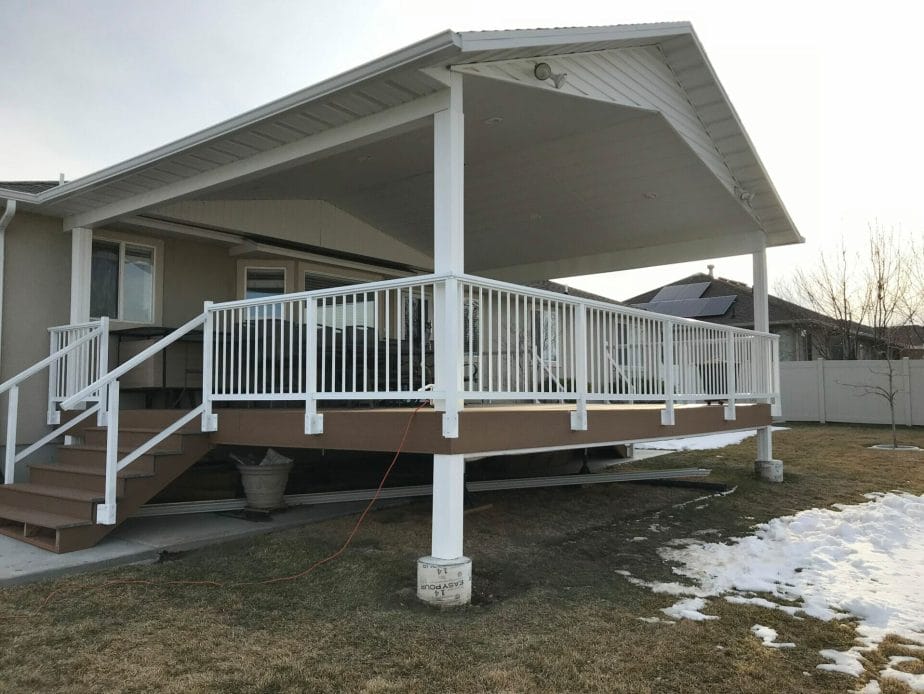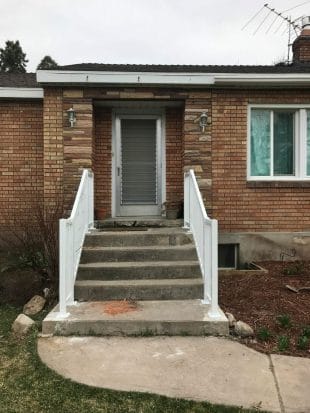Introduction to Wood Railings

When it comes to railing installations, one material stands out for its timeless charm and versatility—wood. A staple in both traditional and contemporary design, wood railing offers a unique blend of aesthetic appeal and functional durability. Whether you’re considering an upgrade for your indoor staircase or enhancing the safety features of your outdoor deck, a wood railing system can be the perfect choice.
Wood railings have long been favored for their ability to seamlessly blend with various design elements. The natural texture and warmth of wood can complement any architectural style, from rustic country homes to sleek modern lofts. Furthermore, wood railings are not limited to being purely wooden; they can be artfully combined with other materials like glass, iron rods, or cable, offering an elevated design while maintaining their essential function.
In the upcoming sections, we’ll delve deeper into the world of wood railings, exploring their benefits, use-cases, types, and much more. So, whether you’re planning a DIY project or considering professional installation, this comprehensive guide aims to provide all the information you need about wood railings.
Understanding Wood Railings
In the world of railing installations, wood reigns supreme for its remarkable versatility and timeless appeal. A wood railing system is not just about aesthetics; it’s a blend of functionality, durability, and affordability.
Wood railings come in all shapes and sizes, catering to a wide range of design preferences. Whether you prefer the rustic charm of western red cedar or the modern sleekness of a wood and stainless steel combination, there’s a wood railing design that’s perfect for you. The beauty of wood railings lies in their adaptability – they can be paired with other materials like glass, iron rods, or cable to create a unique and customized look.
A significant advantage of wood railings is their durability. When treated correctly, wood can withstand harsh weather conditions and heavy usage, making it an ideal choice for both indoor and outdoor railings. Moreover, wood is one of the most cost-effective materials available, allowing homeowners to upgrade their spaces without breaking the bank.
From wooden stair railings that enhance the safety and beauty of your staircase, to outdoor wood deck railings that transform your outdoor space into a stylish and secure area, wood railings offer a wealth of options. They can be stained, painted, or carved to match your home’s interior or exterior design, giving you a custom look that’s as unique as your home.
Benefits of Wood Railing Installations
When considering a new railing system, it’s important to weigh the advantages of your material choice. Wood railings, in particular, come with a host of benefits that make them a popular choice among homeowners and builders alike.
Affordability
Wood is known for its cost-effectiveness. Compared to materials like stainless steel or aluminum, wood offers a cheaper yet equally stylish and durable option. This affordability extends from the initial purchase cost to long-term maintenance, making wood a financially sound choice for many.
Versatility
Whether you’re aiming for a traditional or modern aesthetic, wood railings are incredibly versatile. They can be stained, painted, or left in their natural state to match any design scheme. From a rich, dark walnut handrail to a light, red oak baluster, the design possibilities are endless.
Durability
Wood railings, when treated and maintained properly, can withstand heavy usage and harsh weather conditions, making them an ideal choice for both indoor and outdoor installations. With the right care, your wood railing system can last for many years, providing safety and beauty to your home.
Natural Beauty
Wood’s natural textures and colors add a sense of warmth and charm that other materials often lack. This can enhance the overall aesthetics of your space, making it more inviting and visually appealing.
Easy Maintenance
Regular cleaning, staining, or sealing can keep your wood railing looking like new for years. In case of minor damages, repairs can be easily done without requiring a full railing replacement.
In the following sections, we’ll explore the types of wood railings, their installation process, and the safety considerations you should keep in mind.
The Cost of Installing a Wood Railing
The cost of installing a wood railing depends on various factors such as the type of wood chosen, the complexity of the design, the length of the railing, and whether it’s an indoor or outdoor installation. Here are a few considerations:
Type of Wood
Different types of wood come with different price tags. Hardwood species like walnut and red oak are generally more expensive than softwoods like western red cedar and pressure-treated lumber.
Design Complexity
A simple, straight railing will cost less than a complex one with intricate designs or curves. The addition of elements like iron balusters, stainless steel cable, or composite decking can also influence the overall cost.
Installation
The installation cost is generally based on the length of the railing. It’s crucial to hire a professional installer to ensure compliance with the building code and maintain the integrity of your deck or staircase.
Maintenance
While wood railing systems are relatively easy to maintain, they do require regular cleaning, staining, or sealing to prevent damage and ensure longevity.
To get an accurate estimate, it’s always a good idea to contact your local railing installation company.

Steps Involved in Installing a Wood Railing
Installing a wood railing, whether it’s a wood deck railing, wood stair railing, or wood handrail, involves a series of steps. It’s crucial to ensure each step is meticulously followed for safety and durability.
Step 1: Planning and Designing
The first step involves selecting the type of wood and design for your railing system. This includes choosing between options like a traditional wood baluster system, a modern cable railing system, or a mix of wood and metal elements.
Step 2: Measure and Mark
Measure the length of the area where the railing will be installed. Use these measurements to mark the placement of the posts, ensuring they align with your local building code.
Step 3: Install Posts
The posts act as the main support for your railing system. They should be securely attached to the deck or staircase using screws or other suitable hardware.
Step 4: Install Rails
Attach the top and bottom rails to the posts. If you’re installing a wood deck railing or a wood handrail, ensure they’re level and at an appropriate height for safety.
Step 5: Install Balusters
Balusters, also known as spindles, are installed between the top and bottom rails. The spacing between balusters should follow local building codes to ensure safety.
Step 6: Install Cable (if applicable)
If you’ve opted for a cable railing system, this is when you’ll install the cables between the posts. Ensure the cables are taut for safety and aesthetic reasons.
Step 7: Finishing
Apply a suitable finish to your wood railing. This could be a stain to enhance the wood’s natural beauty or a paint to match your home’s color scheme. This step also serves to protect the wood from the elements and prolong its lifespan.
Remember, while the process may seem straightforward, it’s always best to hire professionals to ensure safety and quality.
Safety Considerations When Installing a Wood Railing
While installing a wood railing, whether it be a porch railing, a wood deck railing, or any other wooden railings, safety should be at the forefront of your considerations. Here are a few key safety points:
Strength and Stability
Ensure your railing system, be it wood balusters or an aluminum railing system, is robust and secure. All components, including the posts, should be firmly attached to resist pressure and weight.
Compliance with Building Code
Adherence to local building codes is crucial. This includes the height of the handrail, the spacing between balusters, and the overall design. These standards are set to prevent accidents and ensure the railing serves its purpose effectively.
Maintenance
Maintenance plays a crucial role in safety. Regularly inspect your railing for any signs of wear or damage. Wood railings should be treated periodically to prevent rot and decay, while aluminum railings should be checked for any signs of corrosion.
Wood Railing in Grand Junction, Colorado
If you’re a homeowner in Grand Junction, Colorado, and you’re considering installing a wood railing, there are a few local considerations to keep in mind.
Weather Conditions
Grand Junction experiences a semi-arid climate with warm summers and mild winters. This climate is generally favorable for wood railings. However, regular maintenance is necessary to protect your wood railing from the elements, especially during periods of extreme temperatures.
Local Building Codes
Ensure you are familiar with the building codes in Grand Junction concerning railing installations. These codes may dictate the height of the handrail, the spacing of balusters, and other aspects of the railing’s design and installation.
Local Suppliers and Contractors
In Grand Junction, we have a variety of local suppliers offering a range of wood types suitable for railing installations. Also, we have skilled contractors, like our team, who are experienced in installing different types of railings, including wood handrails, wood deck railings, and cable railings.
Choose Grand Junction Railing
So, whether you’re considering a traditional wood railing for a classic aesthetic, a modern cable railing, or an aluminum railing for durability and minimal maintenance, we have the expertise to bring your vision to life. We can help you navigate your options, understand the costs involved, and ensure the installation process is smooth and efficient.
Remember, installing a railing isn’t just about enhancing the beauty of your home; it’s about ensuring the safety and comfort of everyone who lives in or visits your home.
If you’re ready to transform your outdoor space or staircase with a beautiful and functional railing, don’t hesitate to reach out to us. Our team is here to help guide you through every step of the process, from choosing the perfect material to maintaining the completed installation.
Contact us today for a consultation, and let’s get started on creating a beautiful and safe space for you and your loved ones.
